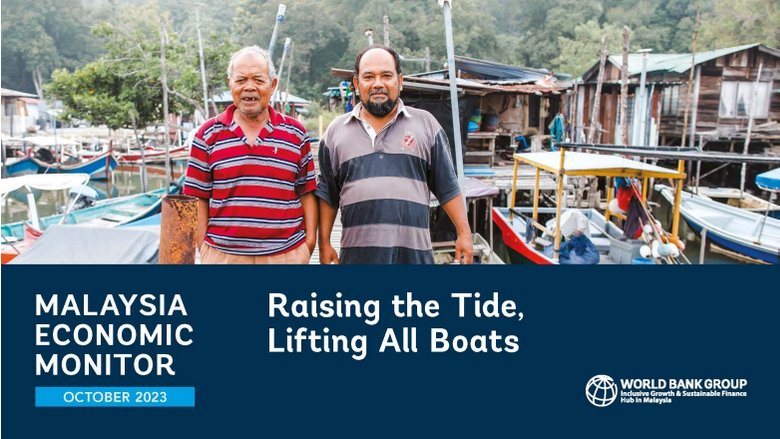KEY FINDINGS
Economic Moderation in 2023:
- Malaysia's economic growth has moderated to 2.9% in Q2 2023, down from 5.6% in Q1 2023, amidst subdued external demand and a global technology downcycle.
- The external sector, particularly exports, contracted by 11.1% in Q2 2023, reflecting a downturn in global demand across all products.
- Despite external pressures, domestic sectors, particularly private and public investment and consumption, have provided some support to economic growth.
Disparities in Economic Recovery:
- While the national unemployment rate has declined to 3.5% and labor force participation has risen, skills-related underemployment remains high, especially among tertiary-educated workers and women.
- The wage gap between low-skilled and high-skilled workers has widened over the past decade, with around half of all workers earning less than RM2,000 per month in 2021.
Poverty Reduction
- The absolute poverty rate was 6.2% in 2022, with urban poverty witnessing a significant rise to 4.5% in 2022, indicating that not all demographics benefit from economic recovery.’
- Fiscal policies in Malaysia, including taxes, subsidies, and transfers, have successfully reduced poverty by 0.9 percentage points. This reduction notably surpasses the upper-middle-income country (UMIC) average.
- The combination of taxes, spending on subsidies (imputed as cash), and cash transfers has been instrumental in achieving this reduction.
- Continued financial and non-financial support, especially to vulnerable, low-income households, directly aligns with further poverty reduction, ensuring that the vulnerable demographic receives adequate support.
Income Inequality
- As measured by the Gini Index, income inequality has been reduced by 6.4 points due to taxes, subsidies, transfers, and in-kind spending on health and education. While the impact is substantial, Malaysia remains 18th out of 25 UMICs, indicating potential for further improvement.
- Most inequality reduction is attributed to non-cash health and education services.
- Combining more robust tax collection with more targeted support could further reduce the Gini Index, ensuring that fiscal policies are robust and precisely targeted to maximize the impact on income inequality.
Fiscal Challenges and Revenue Collection
- Persistent decline in tax revenue as a percentage of GDP and a downward trend in the government’s revenue collection highlight room to increase revenue adequacy.
- Malaysia’s revenue collection, approximately 12% of GDP, is closer to a low-income country than a high-income one. The low tax collection, especially in consumption and personal income taxes, restricts the nation's ability to invest in social spending. The limited revenue limits spending on vital sectors like education, health, and social assistance.
- The emphasis on enhancing revenue mobilization directly addresses the challenge of Malaysia’s low revenue collection, potentially increasing its fiscal capacity and enabling further investment in critical social sectors.
- Approximately 55% of the government’s operating expenditures in 2022 were channeled to rigid expenditures, limiting fiscal flexibility. RM52 billion was spent on blanket fuel subsidies in 2022.
Subsidy Spending:
- In 2019, Malaysia allocated 0.6% of its GDP to fuel and other subsidies, which surged to 2.9% of GDP in 2022.
- The 2022 fuel subsidy spending was more than the total health budget in 2019, over double that of social assistance, and four-fifths for education.
- Social assistance cash and non-cash transfers are four times more cost-effective at reducing inequality than subsidies.
- The recommendation to redirect and refocus the fuel subsidy budget, which surged to 2.9% of GDP in 2022, directly addresses the issue of significant fiscal allocation towards subsidies. Redirecting fuel subsidy spending into expanded and refocused social assistance could double poverty reduction while generating 1.6 percent of GDP in fiscal savings.
Social Assistance:
- 78% of the population receives social assistance, but the benefits are diluted due to distribution to non-poor Malaysians.
- Only 49% of transfers go to the B40, with average transfers equivalent to only 13% of their pre-fiscal income for the poorest decile and 8% for the 2nd poorest decile.
- This is contrasted with an average of 25% pre-fiscal income for the poorest two deciles of households in UMICs.
- If targeting is improved and social protection initiatives are streamlined, this will directly address the diluted impact due to distribution to non-poor Malaysians and enhance the strategic allocation of social assistance to amplify its effects on poverty and inequality reduction.
